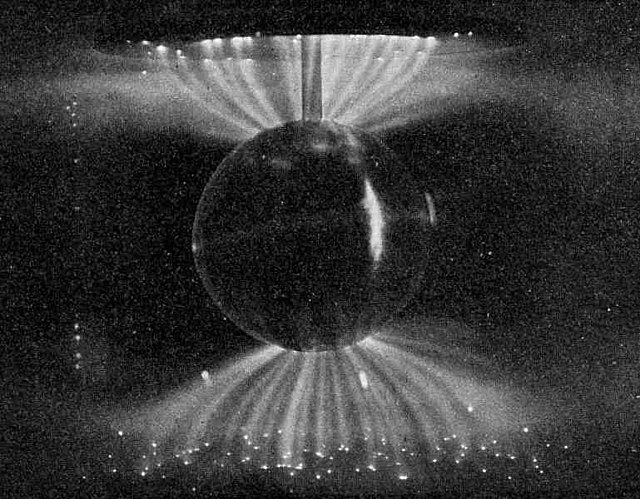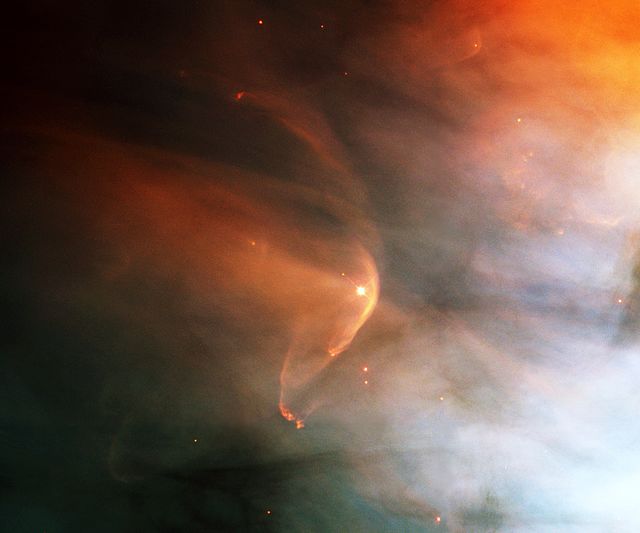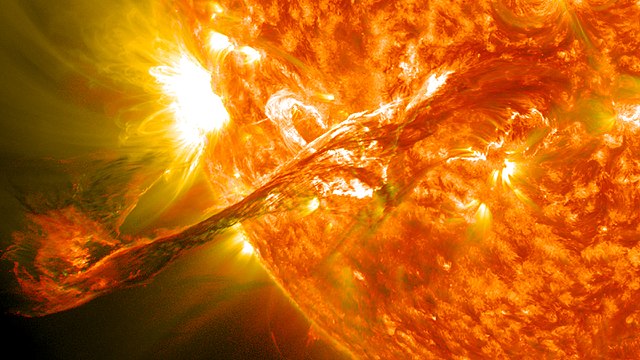Magnetic switchbacks are sudden reversals in the magnetic field of the solar wind. They can also be described as traveling disturbances in the solar wind that caused the magnetic field to bend back on itself. They were first observed by the NASA-ESA mission Ulysses, the first spacecraft to fly over the Sun's poles. NASA's Parker Solar Probe and NASA/ESA Solar Orbiter both observed switchbacks.
Switchback theories infographic from NASA
Illustration of global magnetic field circulation enabled by interchange reconnection. In this scenario an open magnetic field line is (A) dragged against a large coronal loop, by global circulation in the corona, (B) undergoes interchange reconnection, and (C) effectively jumps the approximate width of the originally closed loop, launching an S-shaped switchback in the magnetic field into the corona.
Close to the Sun, and especially above active regions, there are open and closed magnetic field lines. The closed lines are loops of magnetism that arch up into the solar atmosphere before curving round and disappearing back into the Sun.
The solar wind is a stream of charged particles released from the upper atmosphere of the Sun, called the corona. This plasma mostly consists of electrons, protons and alpha particles with kinetic energy between 0.5 and 10 keV. The composition of the solar wind plasma also includes a mixture of materials found in the solar plasma: trace amounts of heavy ions and atomic nuclei of elements such as Carbon, Nitrogen, Oxygen, Neon, Magnesium, Silicon, Sulfur, and Iron. There are also rarer traces of some other nuclei and isotopes such as Phosphorus, Titanium, Chromium, and 58Ni, 60Ni, and 62Ni. Superimposed with the solar-wind plasma is the interplanetary magnetic field. The solar wind varies in density, temperature and speed over time and over solar latitude and longitude. Its particles can escape the Sun's gravity because of their high energy resulting from the high temperature of the corona, which in turn is a result of the coronal magnetic field. The boundary separating the corona from the solar wind is called the Alfvén surface.

Ulysses' observations of solar wind speed as a function of helio latitude during solar minimum. Slow wind (≈400 km/s) is confined to the equatorial regions, while fast wind (≈750 km/s) is seen over the poles. Red/blue colors show outward/inward polarities of the heliospheric magnetic field.
Laboratory simulation of the magnetosphere's influence on the solar wind; these auroral-like Birkeland currents were created in a terrella, a magnetised anode globe in an evacuated chamber.
This is thought to show the solar wind from the star L.L. Orionis generating a bow shock (the bright arc)
CME erupts from Earth's Sun







